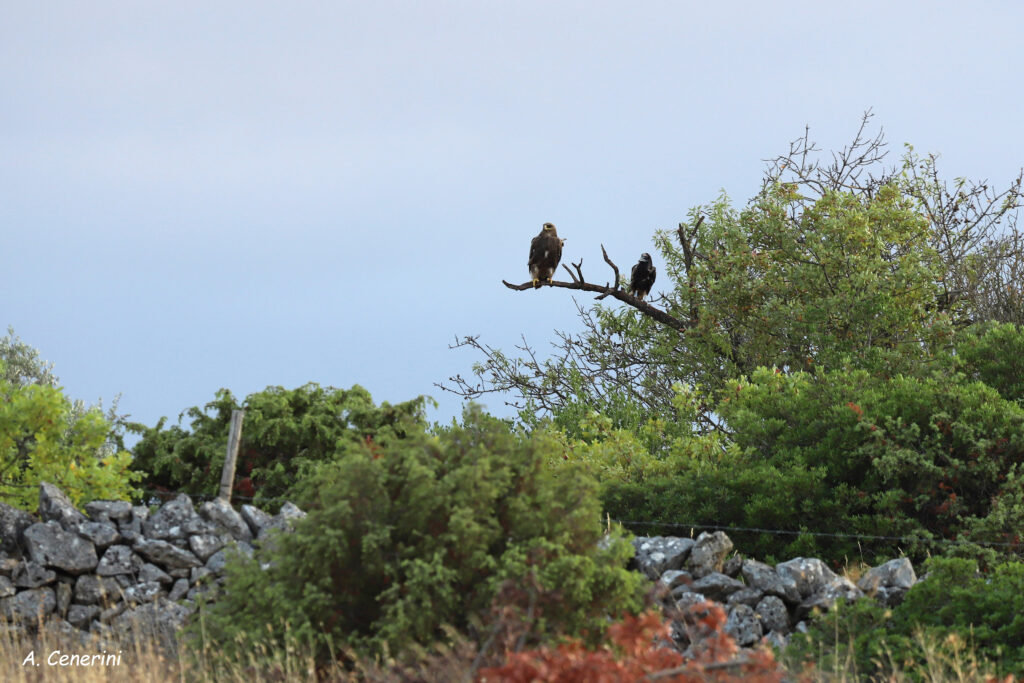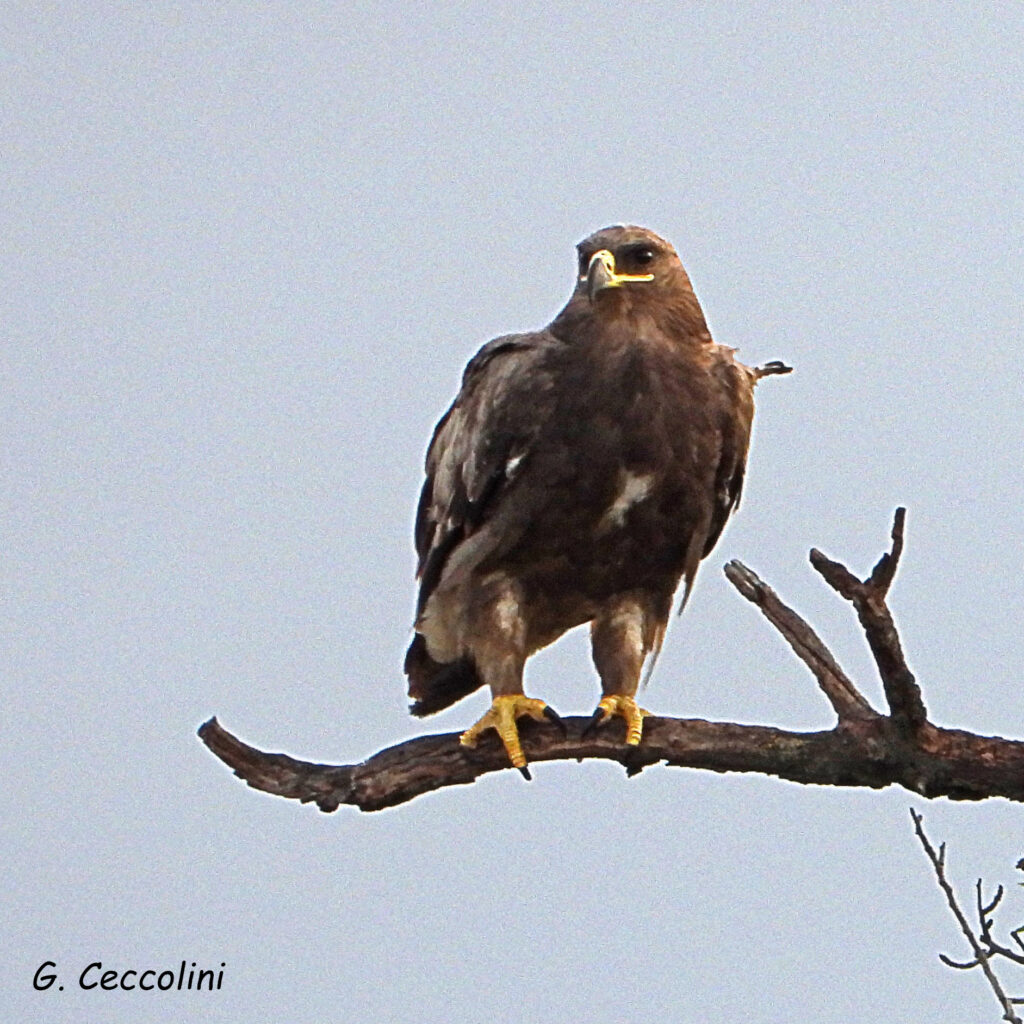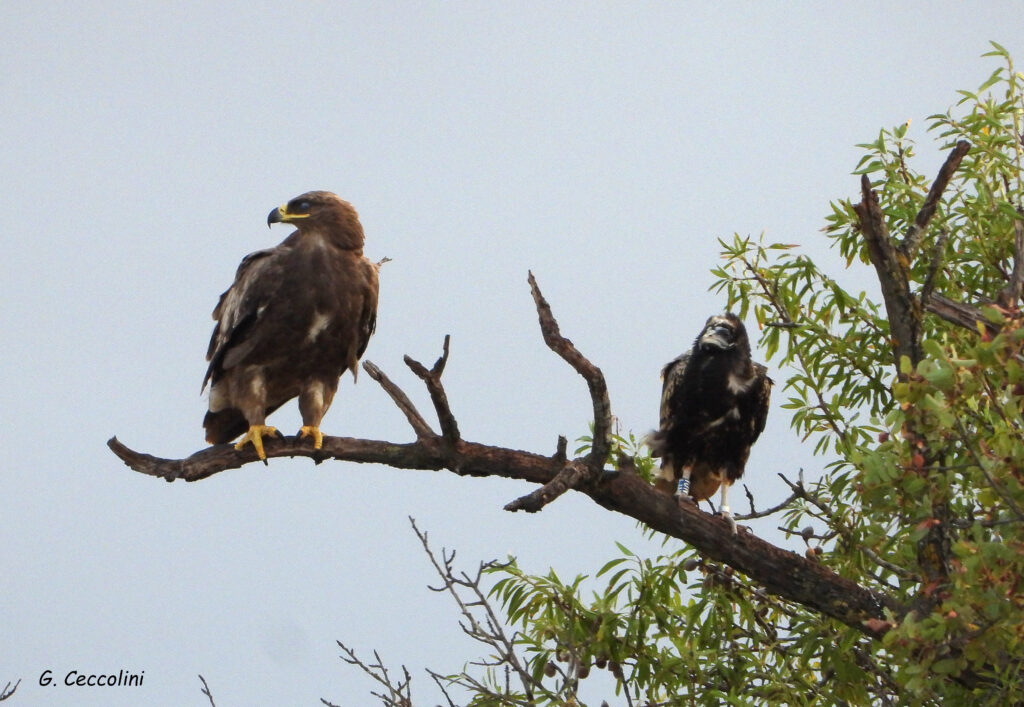The observation carried out in the Murgia Materana Park during the monitoring activity of the Egyptian vultures released in this protected area on 20 August 2021 is certainly a completely unexpected and extraordinary observation.
On August 29th 2021, some members of the LIFE Egyptian vulture staff spotted the Egyptian vulture Isabel resting on the dry branch of an almond tree and in her company, another much larger bird of prey close to her.

A more careful observation of the large bird of prey has allowed it to be identified as a steppe eagle (Aquila nipalensis). Isabel and the eagle were quiet, from time to time they cast a few curious but not hostile glances.
The eagle then took off and was chased by some red kites, who decided to drive it away despite the risky difference in size and in the arsenal of beak and claws available.

In Italy the observations of the steppe eagle are extremely sporadic (17 have been recorded over the last 50 years) since it is a species living mainly outside Europe; the steppe eagles nest in the steppes of southern Asia between Russia, Kazakhstan, Mongolia and China and overwinters in southern Asia, the Arabian peninsula and part of eastern Africa. The steppe eagle features in the flag of Kazakhstan and is the national bird of Egypt.
This strong eagle can exceed 250 cm in wingspan and reach almost 5 kg in weight, so it is evident that Isabel, with her 170 cm wingspan and 2 kg in weight, was “small” in comparison.
The steppe eagle nests mainly on the ground and feeds mostly on small mammals and birds but also on carcasses and waste.

The IUCN considers this species as “Endangered”, threatened, because it is affected by a vast and severe decline. Fires, persecution and disturbance by humans, disturbance by livestock in nesting sites and electrocution are the main threats that afflict the steppe eagles.

